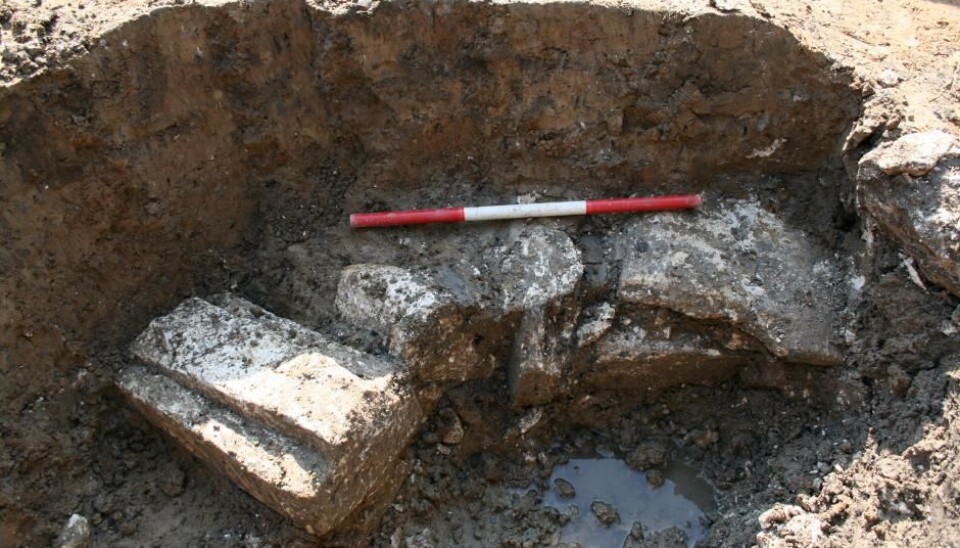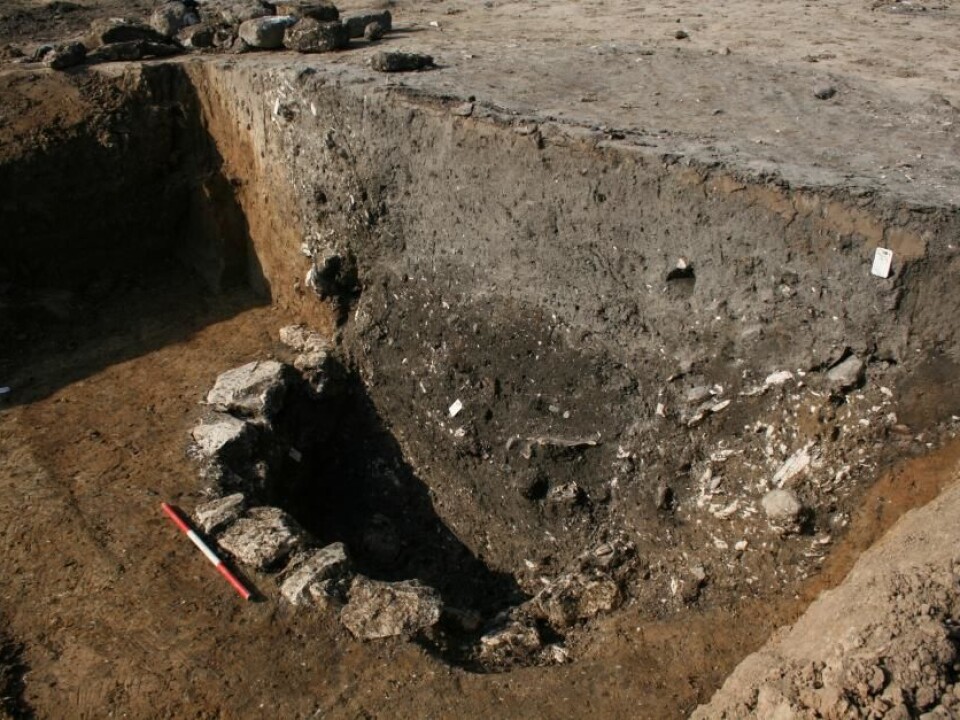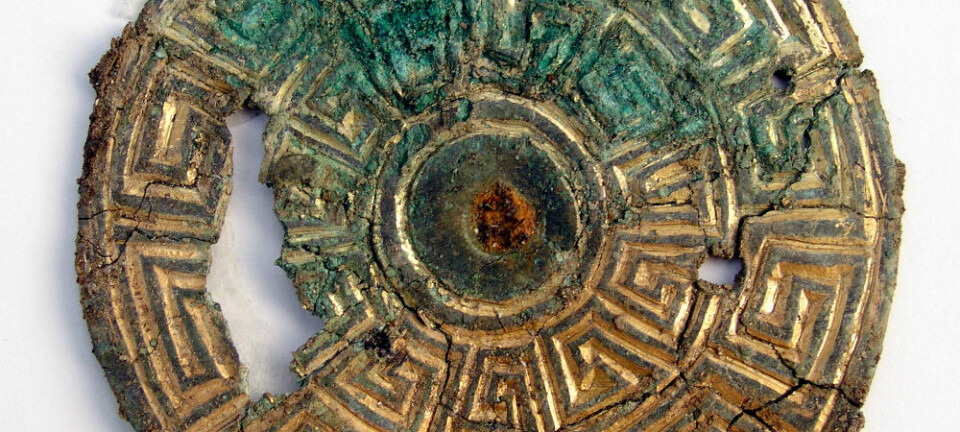
800-year-old well casts new light on medieval murder
How did a young woman come to be buried on unconsecrated ground almost 1,000 years ago? A new archaeological discovery could cast light over the story.
Was it a murder committed in a moment of uncontrolled anger? Or a carefully planned attack?
We will probably never know. But thanks to the history books, we do know that on October 25th 1176 CE, a man by the name of Herlog killed his wife, Margrethe. And we also known that he attempted to cover his tracks.
Perhaps it was because Margrethe was related to one of Denmark’s most powerful men, Bishop Absalon of Roskilde and right hand man to King Valdemar I.
Herlog hanged his wife from a rafter in a barn and made it look like suicide. And he must have thought that he had gotten away with it.

But he should have known better.
Here, you can see a 3D-model of the well. Click and drag the image to rotate and double click to zoom in. (Illustration: Jeppe Færch-Jensen, Museum South-east Denmark)
Archaeologists have found a possible piece of the puzzle in Ølsemagle, a few kilometres east of Margrethe and Herlog’s home in Højelse, south-east Denmark.
A well, built at the end of the 12th century at around the same time that Margrethe was buried.
The well is made out of limestone—an unusual choice for a simple well at this time.
“I don’t know of any such early limestone buildings apart from churches, chapels, and Absalon’s castle in Copenhagen. It became a very common building material in East Zealand, but not until later on. So I was very doubtful that it could really be so old,” says archaeologist Maja Schultz, a curator at the Museum of South east Denmark.
Read More: Archaeologists discover a Viking toolbox
Mysteries surround Margrethe
In the middle ages it was a sin to commit suicide and Margrethe of Højelse, as she became known, was denied a burial on consecrated ground. Instead, she was said to have been laid to rest in “a field near Køge beach” as a disgrace to her family—one of the most powerful in Denmark at the time.
But soon after, mysterious things started to happen in the field. Light fell down from the sky in the middle of the night and people began to suspect mischief. Something was wrong. But what? Absalon was informed.
Herlog was called in for questioning and eventually he broke down and confessed his sin: Margrethe’s suicide was staged. In 1177 CE, her body was dug up and carried in precession to the church in Roskilde and reburied, while Absalon began to fight for her to be sainted.
He also built a chapel in the field in her honour. But no historical sources recorded the site of this chapel.
Read More: Archaeologist: Excavate more before climate change destroys our cultural heritage
Traces of the chapel excited archaeologists
In 1984, archaeologists began to catch wind of Margrethe’s chapel in connection with a smaller excavation in the vicinity of a well. They found fragments of large medieval bricks and limestone in the top soil along with what looked like the remains of a floor.
The farmer said that he often came across large stones of this type, which he imagined had once been the foundations of a building. But the archaeologists became even more excited when they learnt that a nearby field was known as “chapel’s field.”
In 2015, Schultz and her colleagues were granted permission to excavate during the construction of a storm water basin.
Test pits revealed both floor layers and historical fill and traces that people had been there on the exact spot studied in the 1980s.
But as so often is the case, a full excavation did not happen in the end. The construction project was moved. But they discovered something else shortly after.
Read More: Burnt cheese casts light on 3,000 year-old family drama
Limestone is a special material
“Even though the basin was moved, the developer didn’t completely avoid hitting some of the archaeological sites, and one of the things we found was this well, which I think is really special. Both because of the building material and its early date, and of course because it is yet another piece of the puzzle of where the chapel could have been,” says Schultz.
The limestone construction convinced her that the well was built by powerful people and points in the direction of a church building, she says.
Some archaeologists think that Absalon had access to building materials from the limestone cliffs at Stevns Klint, which further suggested that the well was connected to the chapel that he had built for Margrethe—or “Holy Magrethe” as she is referred to in historical sources.
“To build a well in such a material clearly belongs to the higher social ranks. This is what we see with the other limestone buildings from this time. If the chapel had not been located were we found the flooring in 2015, then it was certainly a nobleman’s yard,” says Schultz.
Read More: Burnt down Iron Age house discovered in Denmark
Holy spring often found by chapels
If the well had been built by a chapel as archaeologists suggest, then it was probably used as a holy spring, says archaeologist and curator, Hans Skov from Moesgaard Museum, Denmark.
Skov wasn’t involved in the excavation at Ølsemagle but he has studied holy springs in Denmark.
In the middle ages, people believed strongly in the healing powers of water from a holy spring.
“The well is interesting because it could well be attached to the story of the chapel in Ølsemagle. In this case, the water had great healing power. It’s well known that there were often chapels in the vicinity of holy springs,” says Skov.
Closer to revealing Margrethe’s secrets
The well from Ølsemagle is only an indication and not actual proof that Margrethe’s chapel was in the vicinity. But the indications are now much stronger, says Schultz.
“That we’ve found a construction made of limestone that dates from the later middle ages, increases the likelihood that there was a stone building where we discovered the floor layers. Because limestone is such an unusual building material of the time, I assume that the well belonged to an unusual building--either a nobleman’s yard or probably more likely in this case, a chapel,” she says.
Schultz would now like to gain permission to excavate the original 2015 site further to learn more about Margrethe’s secrets.
“If we could find out more about the floor layer, then we may perhaps compare it with some of the churches that we know had the same floor plans as chapels. We could compare the size and design of the building. I don’t think that the chapel itself is there any longer but it will be really exciting to be granted access to excavate there and see what we can find,” she says.
------------------
Read the full story in Danish on Videnskab.dk
Translated by: Catherine Jex










